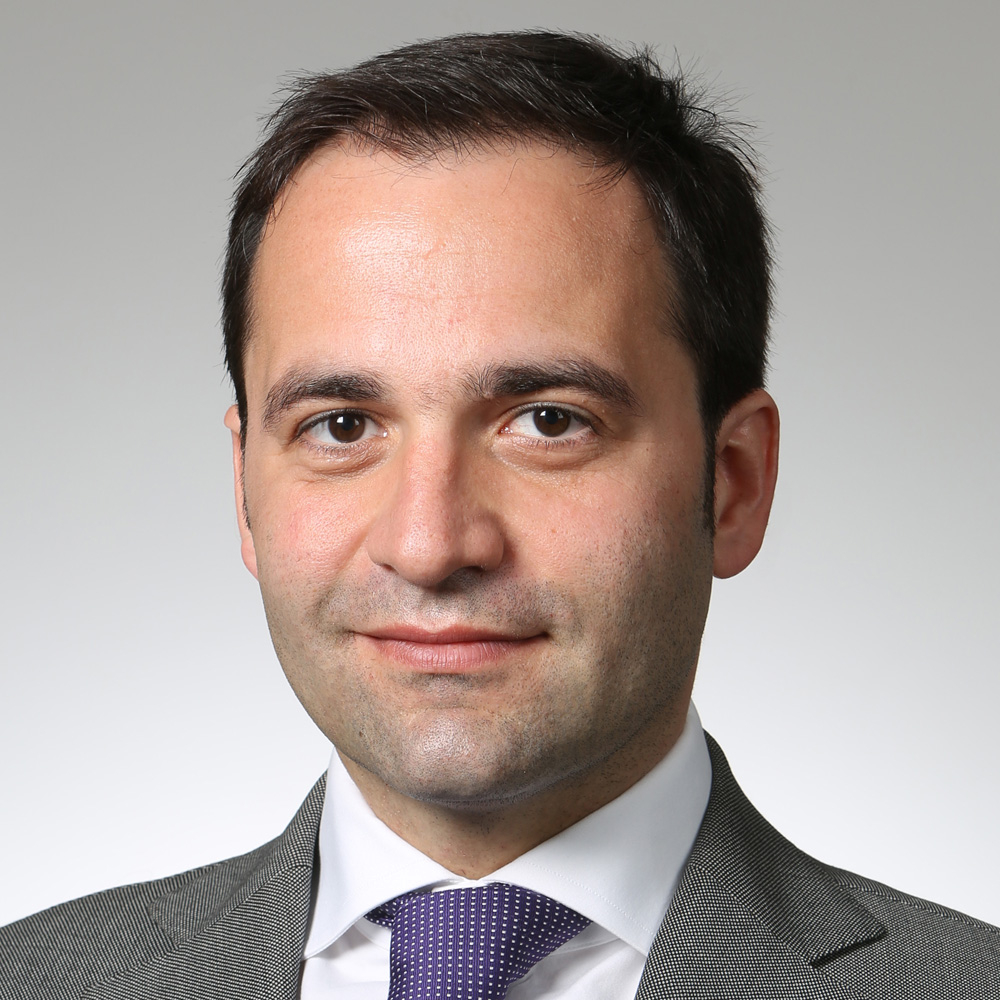Kalin Anev Janse in interview with Börsen-Zeitung (Germany)

Interview with Kalin Anev Janse, ESM Chief Financial Officer
Published in Börsen-Zeitung (Germany), 7 December 2019
Interviewer: Kai Johannsen
Original language: German
Börsen-Zeitung: Mr Anev Janse, in March you announced that you were developing a new service or instrument for issuing debt securities of public institutions in Europe. What is the current status?
Kalin Anev Janse: The European Central Bank has now completed market consultations on a mechanism for the issuance and distribution of public debt in the euro area. There was very broad feedback from issuers and investors. It was about analysing why there is currently no pan-European neutral harmonised mechanism for the issue and initial distribution of securities, for the single currency area as a separate market. It should be evaluated to what extent it makes sense to establish exactly such a service. The ECB has received feedback from 70 market participants, including market associations such as ICMA. These can also be found on the ECB's website. Of course, our answers are also included. The ECB now looks at the results of this survey. It will then decide whether to continue with the EDDI (European Distribution of Debt Instruments service) mechanism. We look forward to continuing to work with the new President of the ECB, Christine Lagarde, on this project.
According to your plans, preparations for this tool or platform should continue throughout the next year. Is it realistic to launch this mechanism in 2021?
The timing of the whole process and the next steps will be taken by the ECB. From today's perspective, the preparations will probably continue until the end of 2020. From today's point of view and subject to the decision being taken to further develop this EDDI mechanism, a start in 2022 is quite realistic, but probably more likely in the second half of the year.
With what kind of investors should this platform start?
I would like to point out that EDDI is not a platform, but a service tool. Issuers and investors would be in direct contact with each other on a platform. It is not a question of disintermediating the banks. EDDI is more than a service where market participants can interact more efficiently, faster and at lower cost. From the outset, the entire functionality should also be available to banks and investors. ESM and SSA stakeholders have a clear priority on why we want to use EDDI: We don't want to lose any of our investors. From this perspective, it can be said that EDDI will lead us to reach more investors.
What are the key benefits this new service offers issuers?
Any issuer that regularly enters the markets with syndicated deals will benefit from improved transparency, faster execution of transactions and reduced operational risk with this service. Issuers can more easily place their debt securities in the market with EU-based investors on a consistent, efficient and centralised basis. The way the whole infrastructure is set up on the markets today, this process involves inefficiencies and operational risks for issuers, both before issuance and in the post-trade process. EDDI will remedy this situation. EDDI broadens the investor base.
What does this mean for distribution?
The distribution of European public debt through this service will become more neutral, harmonised and transparent and therefore more attractive for investors. It is neutral because all investors have the same physical access to the system regardless of where they are. It is harmonised because all issuers can use the same tool for the issuing procedure. This will harmonise the issuance process. The same applies to the documentation of securities. Transparency is created because investors can see at a glance what bonds are on offer from the SSA area. And further information will also be made available to users based on the data from this service.
What are the key benefits for bond investors?
These benefits apply to issuers and investors alike. The advantages that I have described for the issuers therefore also apply to the investors with the corresponding signs. The infrastructure for placing debt securities will become more efficient and less cost-intensive for all market participants. Broadening the investor base is in the interest of issuers. Conversely, investors will have easier access to SSA bonds. Investors will benefit from being able to interact more directly with issuers and receive information on deal updates. Deal data can be generated automatically. There will also be a higher degree of standardisation. There will also be a change in behaviour. In ten years' time, a large asset manager will no longer want to be called by a whole series of banks, all of which will provide him with ongoing information about a deal. You then want to work very easily with different applications and systems to make a deal. Market participants want to see a simple system where they can make deals with a few clicks and generate data and analysis. EDDI's going to do just that.
Let's get to the funding outlook for 2020. What will the refinancing volume be for the ESM and the EFSF?
The total refinancing volume for next year amounts to 27.5 billion euros. The EFSF will account for EUR 19.5 billion and the ESM for EUR 8 billion. However, these are the preliminary figures. As every year, we will communicate the final figures via our investor newsletter. This will happen during December.
How does this look compared to this year? The funding should be completed by now. What bond volume is outstanding on the market?
The total refinancing volume for this year was EUR 29.8 billion and has already been fully realised. The EFSF accounted for EUR 20 billion and the ESM for EUR 9.8 billion. In total, both entities have a bond volume of EUR 286 billion outstanding, of which EUR 200 billion is attributable to the EFSF and EUR 86 billion to the ESM. The last ESM issue for this year was a EUR 3.5 billion five-year bond, which was a very successful transaction. The yield on this bond was minus 0.317%. For EFSF, the last transaction of the year was to increase the current 10-year bond by €1.5 billion, to €3.5 billion, at a yield of 0.078%. The bond was very well received in the market, especially by banks, treasuries and fund managers.
In September, the ESM issued its third dollar bond. It was due in 2024 with a volume of EUR 2 billion. So it was another five-year-old bond. How was it received in the market?
Since 2017, we have made a clear commitment to issue one to two benchmarks in dollars per year. We started the programme with a five-year term, followed by a two-year term, followed by a five-year term this year. The residual maturities of the previously issued securities naturally decrease, so that it now made more sense to again issue a five-year maturity than a two or three-year maturity. We have now built a small curve at the short end of the market with outstanding maturities of 2020, 2022 and 2024. The new five-year deal was very well received in the market. We had an excellent order book for this transaction. There is a very diversified investor base for the dollar deal. At 61%, we saw a very high demand for this deal, especially from the central banks. 33% came from high-quality banks Treasury Accounts. We also had five new investors from Asia. It was a successful deal for issuers and investors alike. The funding in dollars is completed for this year.
We live in a low, zero or negative return environment. Investors are looking for returns and are going up the maturity curve. There is a very good demand for longer maturities. Against this backdrop, can you imagine going up the curve in the dollar and issuing a seven-year maturity?
Of course, nothing prevents us from also issuing longer-dated dollar bonds. It should be noted, however, that most of the demand in the dollar market is for maturities of up to five years. We therefore have a preference for issuing in dollars in the range of up to five years. The dollar market also offers this flexibility to issue in this short maturity range. This will also allow us to address central banks around the globe. It gives us access to the portfolios of other market participants. For 2020, the announcement remains that there will be one or two dollar benchmarks.
Several market participants were very happy that the ESM took up issues in the dollar market, because they had free credit lines for ESM in the dollar, but some no longer in the euro. What do your investors say? Do you want more or longer-dated dollar bonds?
The investors are very happy that the ESM has included the dollar bonds in its refinancing instruments. For some investors, the ESM is a new name, i.e. they can add another address in Europe to their portfolio. This also enables them to diversify their portfolios. We are a unique address, because when you buy ESM bonds, you are practically investing in 19 euro area member states. This attribute cannot be found in any other bond. Many investors have the dollar as the base currency of their portfolio. Thus, against the currency background, they have a clear interest in buying ESM dollar bonds. Some of them do not use derivatives, i.e. they cannot buy Eurobonds from the ESM and swap them back into dollars.
What is the current status of the registered N-bonds programme and what are your plans for this segment in the coming year?
In the first three quarters of 2019, we raised EUR 297 million through these bonds. These bonds are a strategic diversification for us. If German investors, who primarily buy this instrument, are more interested, we can issue more of it. We intend to maintain our presence in this market in the future. Issuance is clearly demand-driven, i.e. issues depend on the interest of investors. However, the price must of course always be right for both sides.
The European Central Bank (ECB) has started buying new bonds again. Are you afraid that this could limit the liquidity of your bonds in the coming years?
The ECB has been buying our bonds since quantitative easing started in March 2015. We estimate that the ECB holds about 44% or EUR 110.5 billion of our ESM/EFSF bonds, which are among the eligible bonds under the ECB's purchase programmes. So far, these purchases have not led to a reduction in liquidity. We monitor this very closely using our own Fintech solutions. We can state that the total turnover in our bonds is between EUR 30 billion and EUR 40 billion per quarter. The ECB's purchases have already been deducted. The figures therefore reflect what banks actually trade with investors on electronic trading platforms. We can therefore clearly see that the ECB's purchases did not affect the secondary market liquidity of our bonds.
How has the liquidity of your bonds developed this year and what do your investors say about the degree of liquidity?
We have seen that the liquidity of the ESM/EFSF bonds has performed well despite the ECB's QE. The majority of the secondary market turnover of our bonds is generated with ticket sizes of 20-50 million euros. This is what we call "real trade" here without QE influence. These ticket sizes are quite comparable to the trading tickets of the bonds of medium-sized countries. Investors are happy with the liquidity of our bonds.
Greece now also has negative returns, but so far only on the money market, and they are also getting good demand for these negative-yielding bills. They also got a good demand for a bond reopening in October. Do you think this will encourage Greece to become a more regular issuer on the bond markets in 2020?
As ESM we can only congratulate Greece on the successful bond issues as well as on the three-month money market issues with negative yields. That was very impressive. The successful development of Greece is also reflected in the early repayment of funds made available to the International Monetary Fund. This of course also generates savings for Greece. The efforts made in the country under the programmes and the implementation of growth stimulating reforms are now having an impact. At our roadshows I always hear a lot of positive comments about Greece from investors. So far, we have always talked about four success stories that the ESM programs have left behind. Now we can say that there are five of them - because Greece is one of them.
What is your economic forecast for the euro area in 2020?
The recent decline in economic activity reflects a combination of external and domestic shocks. External influences are the intensification of the trade conflict between the USA and China, the resurgence of tensions in the Middle East and the still unsolved political conflict of Brexit, the increasing vulnerability of some emerging markets. These factors all have a negative effect on the global economy and trade. This affects sentiment and also burdens investments. On the other hand, demand within the euro zone also remains very resilient. This is also underpinned by strong fundamentals. Unemployment is decreasing and wages continue to rise. On balance, companies enjoy very good refinancing conditions and mostly have solid balance sheets, which should stimulate investment. We expect a gradual recovery as soon as these shocks recede into the background. This should move us back in the direction of potential growth. Given the external downside risks, however, there are no short-term signs of a rapid global economic recovery. The longer the weak global demand persists, the greater the spillover effects from manufacturing to all other sectors. This will also increase the danger of a longer-term weak growth for the euro zone.
Contacts




